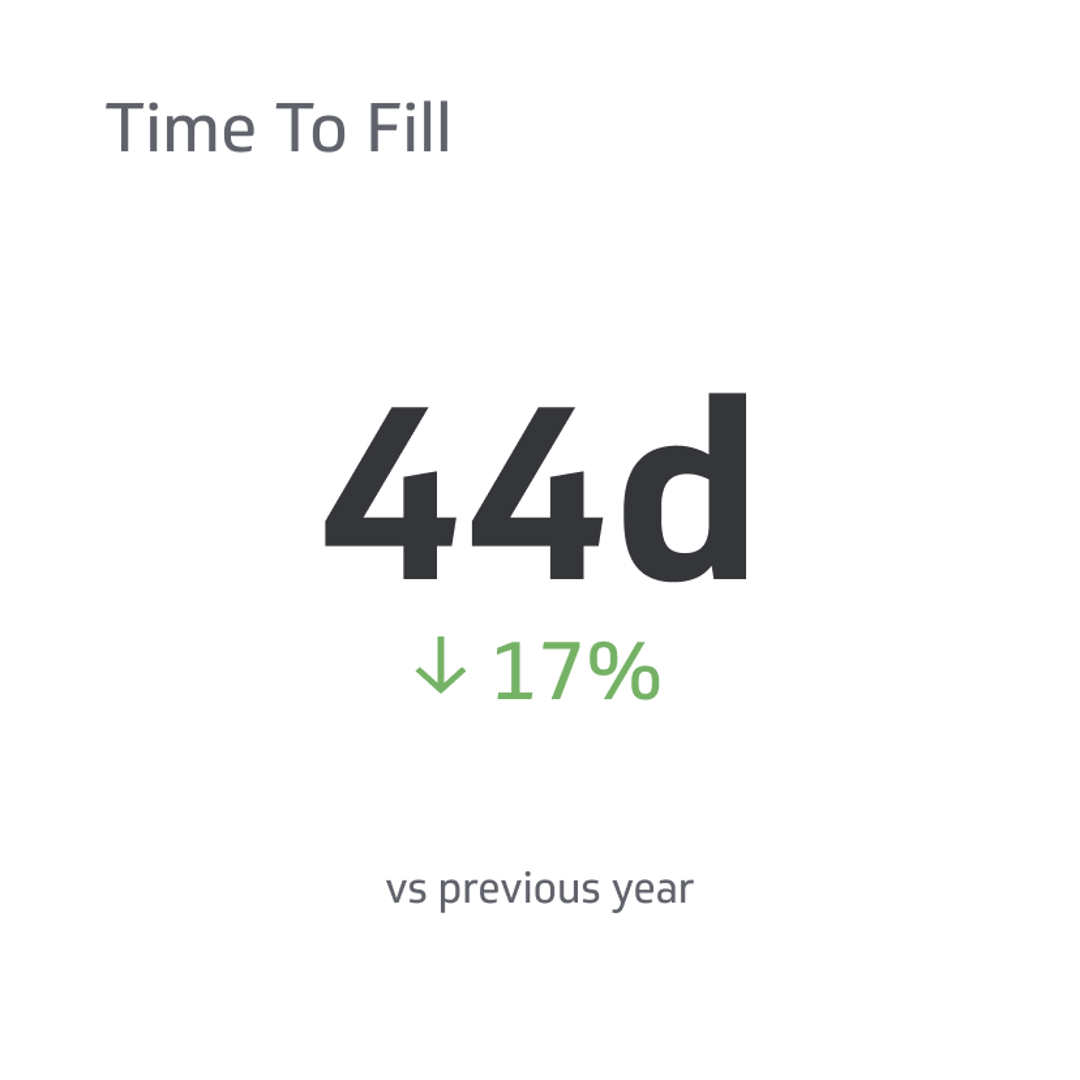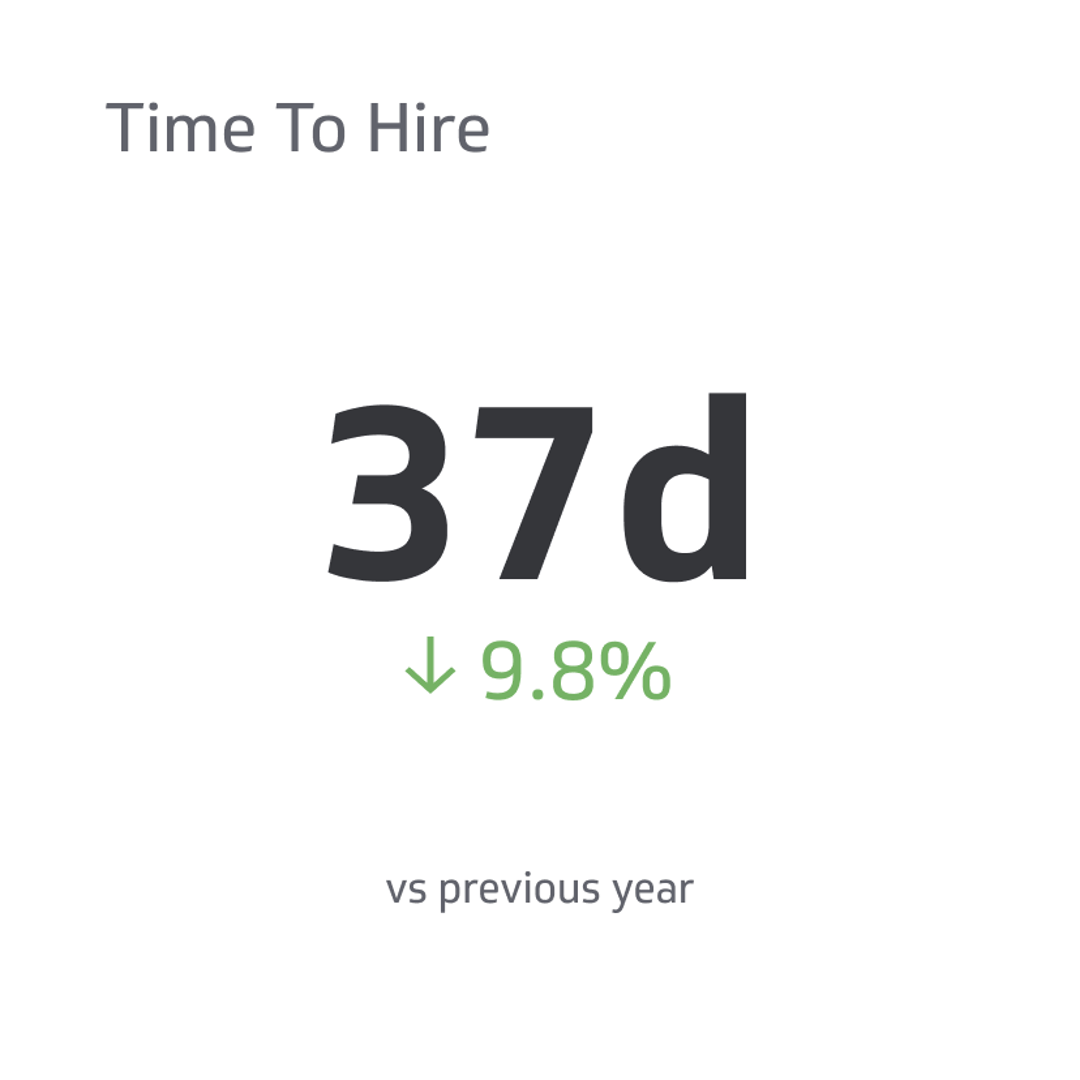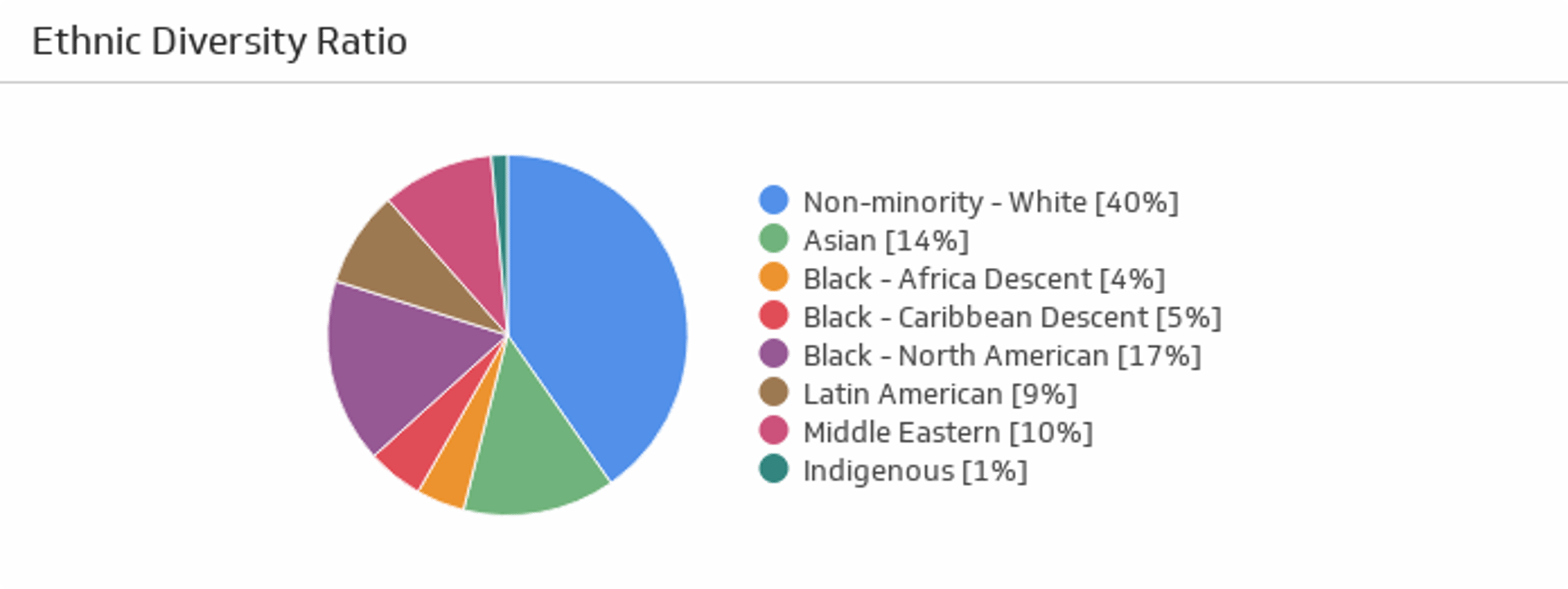Time To Fill
Time to fill is a metric that hiring managers and recruiters use to understand better how long it takes them to fill a particular role within a company.
Track all your HR KPIs in one place
Sign up for free and start making decisions for your business with confidence.

When working in HR or recruiting, you've probably heard the term time to fill every now and then. It's a commonly used phrase in these departments, but what does it really mean? How do you calculate it? And how can you use it to make improvements in your organization? Here's everything you need to know about time to fill.
What is Time To Fill?
Time to fill is a metric that hiring managers and recruiters use to understand better how long it takes them to fill a particular role within a company. It's the best way to get a realistic idea of the time period it will take to replace a leaving employee.
Of course, it varies from position to position and department to department, but having an average time-to-fill metric can provide more insight. Using this measurement allows people to better plan for an employee's absence, plan recruitment strategies better, and streamline their hiring process accordingly.
When your time to fill is too long, it can help companies improve their hiring time and typically make other employees happier—a shorter time to fill means less overtime and overworking other employees.
Besides impacting your current employees, it affects your hiring process. When you take too long to hire someone, people you're genuinely interested in can get disinterested or end up at another company because you took too long to get back to them with an offer.
Time To Fill Compared To Time To Hire
Time to fill and time to hire are similar metrics in recruitment, but they're a little different. They measure entirely different aspects of the recruitment process and offer different insights.
The main difference between the two is the timeframe. Time to fill generally starts from the day someone leaves to when a job offer is made. Time to hire begins from the moment a candidate applies for the job to the moment that the candidate accepts the job offer.
Companies should utilize both human resource metrics when assessing their hiring and recruiting process to get a bigger picture of what's working and what's not.
Why Do We Measure Time To Fill?
Knowing how to measure time to fill is only half the battle. Understanding why organizations should use this metric is vital to overall HR processes and the company. Without applying the data, your time to fill won't mean anything. Here's why we measure time to fill in organizations.
Allows You To Plan Recruitment Strategies Better
When you measure time to fill, you'll generally know how long your company takes to fill specific department roles. With this knowledge and data, you can better plan your recruitment strategies.
For example, if you know how long it takes you on average to fill a particular role, you know when you need to start recruiting upon someone putting in their two-week notice or letting someone of that position go. You'll be able to be more efficient in your recruiting efforts by conducting them at the right time based on time to fill calculations.
You Can Solve Inefficiencies in Recruiting
Measuring time to fill can help you discover inefficiencies in your recruiting process and then devise solutions for them. When you can find solutions, you can streamline your hiring process and reduce your time to fill various positions.
You'll be able to see what specific roles take the longest to fill, what departments, and what hiring tactics work best for what roles. Other things you can learn by measuring time to fill are what positions fill better with job postings on specific websites over others.
This will allow you only to use those outlets in the future when filling those roles since it's the most efficient based on your measurements.
Reduce The Cost of Unfilled Positions
You probably know that hiring people costs money, but did you know that the longer it takes an organization to fill a position, the more it costs a company?
Placing job advertisements costs money. Keeping them up for long periods of time costs even more money, and you'll often be paying other employees overtime until the position is filled.
Plus, having employees work to make up for the lack of a position being filled can lead to burnout, causing the loss of more employees and lower customer satisfaction overall since your employees are not happy.
Measuring time to fill and knowing what yours generally allow you to aim for a quicker hiring process. Eventually, this can help reduce the cost of your organization's unfilled positions.
How To Measure Time To Fill
Measuring time to fill is simple. You can calculate it in a few ways, but all will provide your organization insight into your hiring process.
Remember, you'll want to adjust the metric to whatever makes the most sense for your company. Here's how to measure time to fill various roles within your organization.
Calculating For One Position
Time to fill is the number of calendar days, not business days, that it takes your company to fill a role within your organization. To begin calculating this, you need to decide on your starting point. Some people count the starting point as when there's no one in a specific role, while others count it as someone's last day.
In many cases, people say the starting point for time to fill is the day that someone turns in their notice because, from that point, you'll start looking to fill the role. The formula is the number of calendar days between the starting date and when a candidate accepts a job offer or starts onboarding.
Let's look at an example where an employee turned in their notice on January 1st, their last day was January 15th, and your organization posted the job on January 5th. Here's what the time to fill would be if you filled the role by February 15th:
- Based on the day they gave notice: 46
- Based on their last day: 31
- Based on when you posted the role: 41
Regardless of what your organization uses as the starting point, it's essential to use the same starting point every time you calculate time to fill to have accurate data and relevant benchmarks to compare.
Calculating Average Fill Time
Average time to fill is a great metric and provides insight across different positions within your company. Calculating the average time to fill is simple. You'll add up however many days it took to fill the same role each time and divide it by the number of positions you filled.
For example, let's say you hired four customer service representatives for your company. If hiring them took 12, 15, 20, and 30 days, your average time to fill this role would be 19 days after rounding.
Besides calculating the average time to fill specific roles, you can use it periodically for all roles within your company. Some people calculate the average time to fill quarterly for all open roles regardless of position. You can also perform these calculations annually and see where your company can make improvements in your hiring process for specific roles and departments.
Calculating Time To Fill Per Role and Department
Something to think about when calculating time to fill in the role and department: it will be far easier to fill an entry-level role in customer service compared to a senior data analyst solely because of the larger candidate pool.
That being said, the average time to fill will look different for these two roles and any other you want to calculate it for within your company. Comparing the average time to fill various roles and departments is like comparing apples and oranges. Just because one's higher doesn't mean it's not good based on the role.
The best practice is only to compare the average time to fill similar roles or within the same department. This way, they're comparable to two entirely different roles in opposite departments.
What is a Good Time-to-Fill?
A good time to fill will vary from company to company, industry to industry, and country to country. We measure time to fill by the days it takes to fill a role, so generally, the lower the number, the better.
Some industries have a higher time to fill than others solely due to a lack of candidates and not because of a company's hiring practices.
Hypothetically, if it takes your company 50 days to fill a role but then you get that down to 30 the next time, that is an excellent improvement for your company but isn't necessarily a good time to fill compared to other companies within your industry.
To determine a good time to fill for your company, industry, and country, you can look at research and see where you stand. If it's evident that your company is taking a lot longer than the competitor companies to fill roles, then you might need to start looking into ways to reduce your time to fill.
How To Reduce Time To Fill
If you're looking for ways to reduce time to fill in your company, here are a few helpful tips that you can try.
Reduce Bottlenecks
Reducing bottlenecks will help you reduce the time to fill. Common bottlenecks in a recruitment process include a communication gap between the hiring manager and the recruiter.
You'll want to ensure that your objectives for hiring a specific role are well known so there aren't any discrepancies. Another common bottleneck is any hiring assessments. If candidates are taking too long to complete or managers to review them, automation can speed this up and reduce the time to fill.
Use Recruitment Technology
The recruitment process can be fully automated nowadays. Doing this will help reduce the time to fill and make your hiring job far more manageable. Recruiting software can help weed through applicants and help you automatically post positions to job boards.
Recruitment technology can help speed up the process and prevent people from dropping out due to delays. Interview scheduling tools and software can be used to check references and onboarding documentation.
Look at Previous Candidates for Current Roles
Sometimes the best candidates for current roles are ones you pre-screened before but didn't go with. You can go through your applicant tracking system (ATS) and save the company’s time by avoiding pre-screening new candidates.
Final Thoughts
Time to fill is one of the most critical metrics in an organization. It's how long it really will take your company to fill the role of a departed employee. Reducing time to fill can help you in keeping your business running smoothly and make the hiring process faster for both parties.
Understanding time to fill will help you find ways to decrease the time it takes to fill a role and keep the business running as usual.
Related Metrics & KPIs



